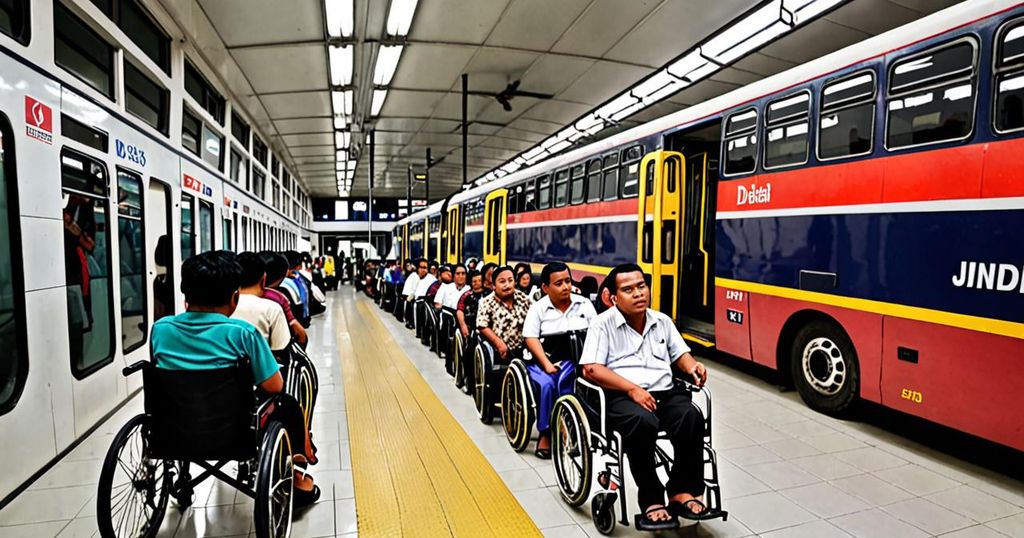Indonesia’s public transportation system has consistently failed to accommodate disabled individuals, leading to their isolation from society and limited professional opportunities.
Hari Kurniawan, a 44-year-old Jakarta native who was born with a congenital disability, faces constant challenges due to the lack of inclusive public transportation. Kurniawan, who prefers to be called Cak Wawa, revealed that motorcycle taxis have refused to pick him up without providing a clear reason, leaving him feeling rejected and excluded.
Wheelchair-accessible vehicles (WAV) remain scarce in Indonesia, forcing many disabled individuals to rely on modified small-sized vehicles for their transportation needs. Triyono, the founder of Difa Bike, a motorcycle taxi service for disabled individuals, highlighted the insufficiency of wheelchair-accessible transportation in certain areas, emphasizing the need to raise awareness and provide accessible transportation for the disability community.
Furthermore, the cost of WAV taxis poses a significant financial burden for many disabled Indonesians, limiting their mobility and access to essential services. Faisal Rusdi, a 47-year-old painter and member of the Association of Mouth and Foot Painting Artists (AMFPA), shared his challenges in using traditional taxis and cars, illustrating the need for accessible transportation options that cater to wheelchair users.
The National Team for Accelerated Poverty Reduction (TNP2K) reported that the majority of disabled individuals in Indonesia lack access to assistive devices and public transportation, exacerbating their social and economic marginalization. Additionally, Monash University’s research revealed that only 14 percent of disabled individuals in Indonesia utilize general public transportation, emphasizing the significant gaps in accessibility.
Deliani Siregar from the Institute for Transportation and Development Policy emphasized the unresolved debate on inclusive public transportation in Indonesia, citing the pressing need to address accessibility and transportation design to enhance the mobility and well-being of disabled individuals.
Budi Ratmoyo, a 48-year-old tailor who volunteers as a motorcycle taxi driver, shared the story of a 23-year-old customer with cerebral palsy who has been unable to leave the house for 16 years due to the lack of accessible transportation options, further underscoring the urgent need for inclusive public transportation.
To overcome these challenges, collaborative efforts are essential in creating disability-friendly transportation systems. Triyono highlighted the preference for wheelchair-accessible taxis in larger cities, emphasizing the financial obstacles associated with expanding accessible transportation options.
Richie Bestianto, the general manager of Motion Aid, a WAV provider, shed light on the cost of modifying wheelchair-accessible vehicles, signifying the financial barriers that hinder the widespread adoption of accessible transportation.
Despite these challenges, there is hope for progress in creating disability-friendly transportation. Deliani emphasized the importance of making transportation spaces accessible for disabled individuals, recognizing that it benefits the entire community.
In conclusion, addressing the lack of inclusive public transportation in Indonesia is vital to promote the social inclusion and economic participation of disabled individuals. By amplifying the voices of those affected and fostering collective efforts, Indonesia can work towards creating a more accessible and inclusive transportation system that accommodates the needs of all individuals, regardless of their mobility limitations.

Leave a Reply